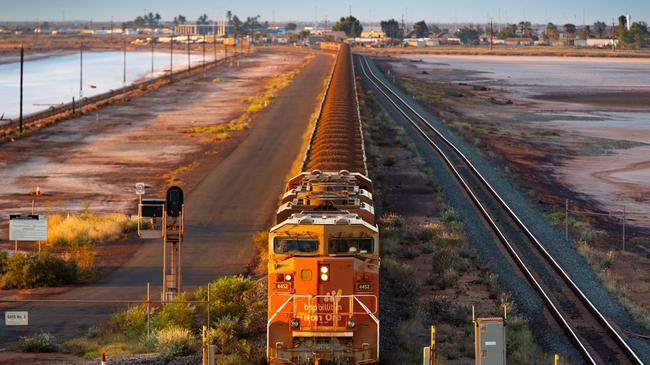Environmental concerns have toppled commodity prices as the top risk facing miners
Commodity prices have fallen from top of the list of mining executive worries, for the first time, according to a new survey.

The growing tide of environmental concerns have knocked worries about volatile commodity prices off the top of the list of industry risks cited by senior mining executives for the first time, according to a new report.
Years of pressure from environmental activists and growing concerns about global warming expressed by big institutional shareholders have pushed “environmental risks, including new regulations” to the top of risk factors for the industry, according to KPMG’s Global Mining Outlook 2022.
The survey was conducted in the first two months of the year, and KPMG global head of mining Trevor Hart said Russia invasion of Ukraine in March would likely have pushed geopolitical concerns higher on the list had it occurred within the survey period.
But Mr Hart told The Australian the fact that commodity price concerns had dropped from the top of the list for the first time in the 12-year history of the KPMG executive survey underscored the growing importance of environmental, social and governance factors within the global mining industry.
“Seeing the environmental risk come to the top of that leaderboard this year is just reflecting and underlining how important stakeholders are viewing performance in that aspect of miners and their operations,” he said.
Mr Hart said the level of investor and community concern about environmental factors was also showing through in the level of investment by the world’s biggest mining companies in addressing carbon emissions, water usage and other key environmental impacts of mining.
Commodity price risk came in second rank, followed by community relations and social licence to operate, with political instability and the risk of asset nationalisation, and global trade conflict concerns rounding out the top five.
And, for the first time, the global mining “talent crisis” made an entry into the top 10 concerns facing the industry.
The skills crisis has become acute in Australia, with a raft of major mining companies downgrading output expectations and warning of growing labour costs over the last year.
The talent crisis placed in the top five among Australian executives that took part in the survey, but Mr Hart said concerns around competition for skilled and talented workers was emerging as a key concern across the entire industry.
“It‘s pretty concentrated here, there’s no doubt. But when you look at the sort of investment that’s going into just even decarbonising mining operations – the investment capital that’s going to need to translate into people – that sort of trend is happening globally, not just in Australia,” he said.
Mining companies have ramped up calls for an increase in immigration levels during the federal election campaign, arguing it will help solve labour shortages across the industry. Mr Hart said the emergence of global concerns about finding skilled labour and talent meant opening up Australia’s border may not solve the industry’s problems immediately, but would almost certainly help.
“It is a big market, the market of skills. And if you‘re not participating at all, you really can’t help solve (the problems). If you open borders and attract talent into Australia, you’re at least competing in a bigger market. The Australian talent market is pretty limited,” he said.
“You have to compete. You‘re now seeing miners focus heavily on all of the factors that retain people. And those levers are no longer just money, but what sort of environment you’re creating. And this goes a little bit to the whole broad ESG agenda, and how you attract the right skills and capabilities to the sector.”
But despite ongoing worries that beset the sector, amid strong prices across almost all commodity groups Australian executives are the most bullish they have been about the future for the mining industry, according to Nick Harridge, KPMG Australia’s national mining leader.
“About 75 per cent of the executives in Australia were confident or very confident about the future of their organisation. And that was the highest across all the countries’ where executives were surveyed,” he said.
“In the last few years, there have been pretty good levels of confidence – not that high, but in the early 60s. So it does reflect a stronger outcome, which I think is probably reflective of what the commodity markets have been doing.”


To join the conversation, please log in. Don't have an account? Register
Join the conversation, you are commenting as Logout